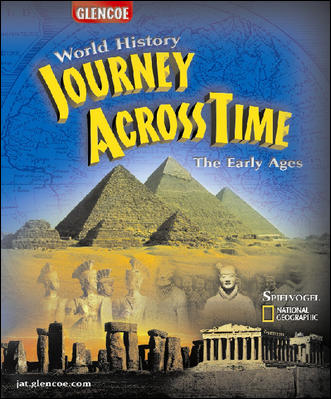Journey Across Time: The Early AgesChapter 18:
Enlightenment and RevolutionWeb Activity Lesson PlansIntroduction
After the Renaissance, exploration, scientific curiosity, and enlightened citizens paved the way for revolution. Sweeping changes in government spread from France all the way to the eastern shores of the United States. As students learned in this chapter, English settlers established the first permanent colony, Virginia, in America in 1607. As Britain grew more powerful, it began to exert force, by way of taxes on the colonists. In this activity, students will chronicle the events of the American Revolution. They will gain a new perspective of what it was like to be a colonist, defending life and liberty.
Students will visit the PBS Web site Liberty! The American Revolution to read the newspaper headlines that detailed these exciting events.
Destination Title: Liberty! The American Revolution Lesson Description:
Students will learn about the American Revolution straight from the headlines. They will read articles detailing the events that led to the birth of the United States. Students will take an online quiz to test their knowledge of the American Revolution. They will answer four questions about what they've learned. Students will apply this knowledge as they create a front-page newspaper article, using background information and the political temperature of the colonies and England to change the outcome of the American Revolution.
Instructional Objectives - Students will describe the events and figures of the American Revolution.
- Students will apply this information, analyze the politics of the time, and draw conclusions about the alternate outcome of the American Revolution.
Student Web Activity Answers - Parliament enacted the Stamp Act to provide the money needed to maintain peace between settlers and the Native Americans.
- The members of the 2nd Continental Congress were all white men who owned property.
- The American victory provided proof of the revolution's strength to France's Louis XVI. After the Battle of Saratoga, he committed French military aid to the colonists' cause.
- James Madison led the charge for the Bill of Rights. Originally, there were 17 amendments.
- Answers will vary. Students should use information from their textbook and the PBS Web site to create the front page of a virtual newspaper.
 | 
















